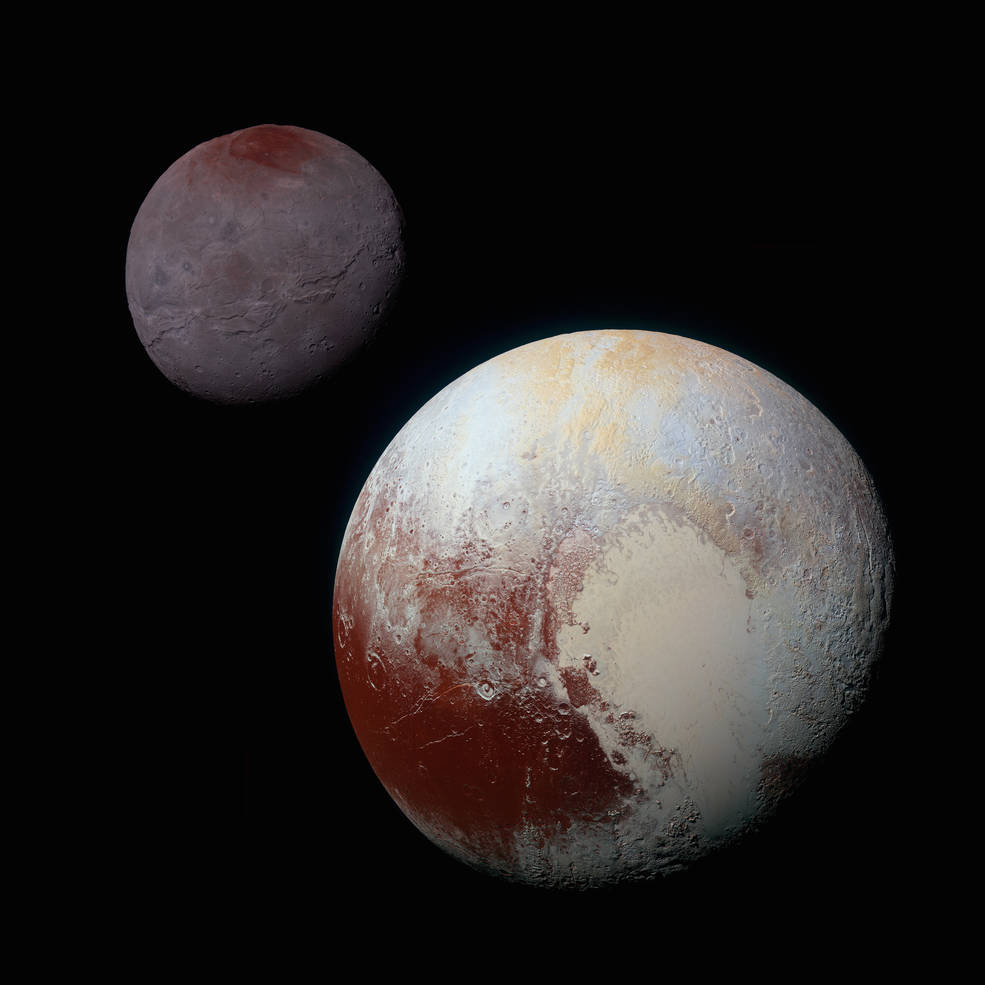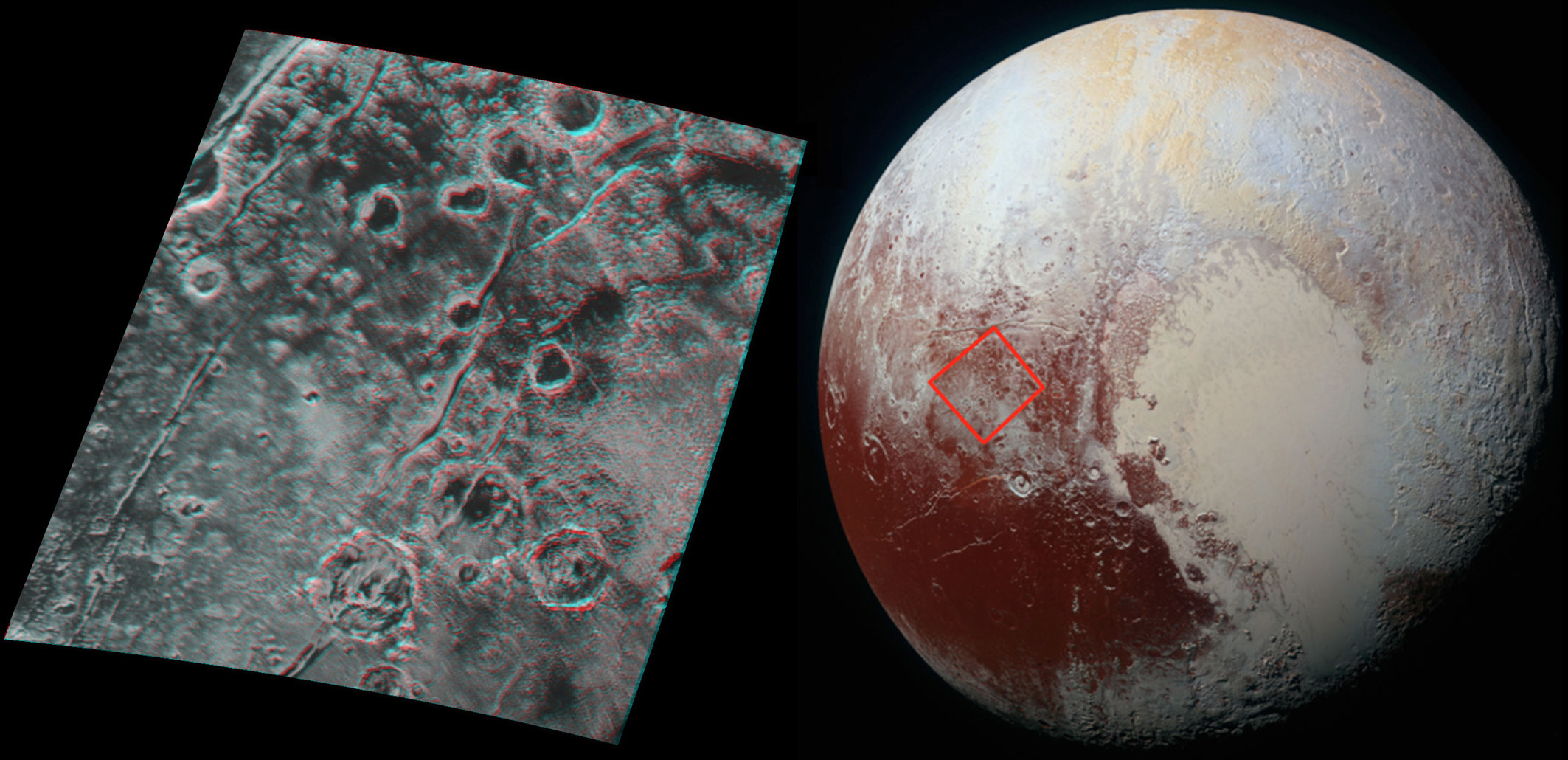NASA posted a picture of Pluto in 3D

The picture shows Pluto and Charon, the satellite of the planetoid (photo: NASA)
According to experts from NASA, it is now possible to create three-dimensional images of the surface of Pluto, since there are quite a lot of photos of a planetoid from which stereoscopic maps can be made. It is worth recalling that the number of photos of Pluto in the NASA database is constantly increasing, as the New Horizons device sends more and more new images stored in the system’s memory.
Scientists have compiled from these images an exact topographic map of most of the areas of Pluto recorded by the cameras of the interplanetary station New Horizons. Perhaps stereoscopic maps will help specialists to clarify the details of the evolution of the surface of a dwarf planet.
One of the first pictures of this kind was a 3D image of a region 300 kilometers long. In the photo, the region is highlighted with a red frame; this is a rather old surface area with a large number of craters. After analyzing the image, it turned out that the craters depth in the lower right part of the image is about 2.1 km. The size of the smallest visible elements of the eye - 600 meters.
')
As previously reported , the ice on the surface of Pluto is moving. Such a movement was seen in the region in the shape of a heart. The composition of the ice - nitrogen, methane, CO, the main components of the glaciers on Pluto. The data obtained by scientists, in many ways changed the point of view of astronomers on the processes occurring on the dwarf planet. This is not a dead world at all - processes that gradually change the surface of Pluto continue to work here. In particular, the ice moves, which may be proof of the theory of the existence of a liquid ocean under the ice cover of Pluto. The existence of moving glaciers makes Pluto look like active worlds like Earth or Mars. In addition, scientists have obtained evidence of the existence of complex organic compounds on Pluto. It is acetylene, ethylene and other substances. New Horizons has already found traces of the presence of these compounds.

When you click the image will open in full size.
Stereoscopic maps would also be interesting to create for Charon, because this satellite of Pluto is a very interesting object to study. So, High-resolution Charon's images, taken by New Horizons on July 14 and transmitted to Earth on September 21, demonstrate to scientists a whole “belt”, a huge canyon, passing through the entire planetoid. Its length is 1600 kilometers, which is four times more than that of the Grand Canyon on Earth. Depth - twice. It seems that in the past, Charon was very active geologically.
Source: https://habr.com/ru/post/366819/
All Articles